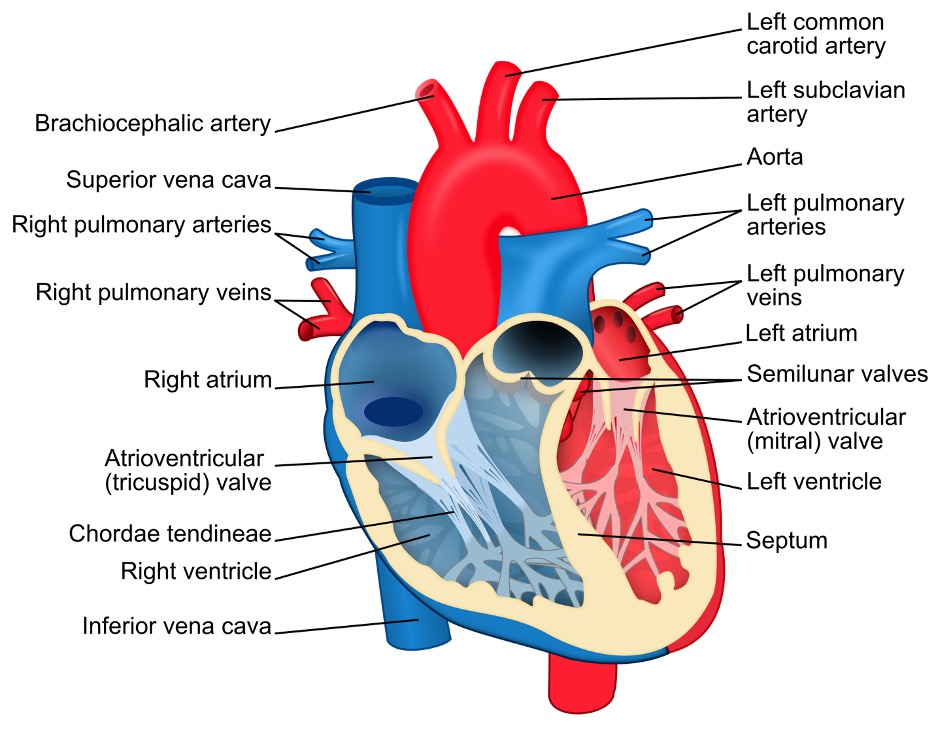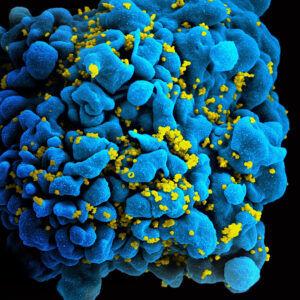
Figure 1: The heart is one of the most complex organs in the body. Pictured here are some of its more major anatomical features. There are many more features, and a large number are not heavily researched. There are some that researchers are not even sure of their function. By continuing research into these parts of the organ, scientists can gain more complete pictures on the effects of diseases like coronavirus.
Image Citation: Wikimedia Commons
As the coronavirus pandemic has evolved, doctors have emphasized the devastating impacts of the virus on the lungs. However, as more research comes out about the disease, researchers have begun to discover the detrimental effects of coronavirus on the heart as well. Recent findings have shown that two months after young, otherwise healthy patients had recovered from the virus, a majority had signs of cardiac inflammation, showed structural changes in the heart, and exhibited biomarkers typically found in elder patients who recovered from heart attacks. Another study, which focused mainly on elderly patients who had passed away from the virus found high levels of the virus in the patient’s hearts, which could have caused damage that contributed to the patients’ passing.1 As questions about the virus’s impact on the heart continue to be asked and answered, it is more critical now than ever to better understand the heart itself and to attempt to elucidate solutions to the unsolved mysteries of cardiac anatomy and better analyze all of the extra-pulmonary effects of coronavirus.
One such mystery was just addressed in a study headed conducted by Hannah Meyer, a fellow at Cold Spring Harbor Laboratory, New York. Although it is known that trabeculae are rounded muscle projections that line the inner surface of the ventricles, until this research was published, no one knew exactly what their role in the heart was.2 To better understand both their role and development, the team of international researchers at Cold Spring leveraged expertise in genetics, biology, engineering, clinical research, and AI to analyze magnetic resonance imaging (MRI) scans, heart morphology, and associated genetics. In all, the team analyzed MRI scans, and they found that the trabeculae provide a rough surface that allows blood to flow more efficiently while the heart beats. They also were able to determine six DNA loci that affect development of trabeculae patterning.3
Besides finally solving the mystery of trabeculae, the team had other goals such as understanding if trabecular patterns had any impact on the heart and associated disease. As a result, it searched for and links between different trabeculae patterns and the risk of developing heart failure by comparing the findings from MRI scans to heart failure data from over 50,000 patients. Additionally, it was found that two of the six loci critical to trabeculae development are also significantly involved in neural cell branching.3 Thus, there were questions that this study brought up for both heart and brain researchers that open the path to further research. Perhaps more importantly, Meyer commented that the study highlights the importance of taking interdisciplinary approaches to research as without the combination of different areas of expertise, the team would have never been able to determine the key role the trabeculae play in the adult heart.4
As the medical community continues to grapple with the ever-evolving effects of coronavirus, researchers and doctors will not only be need to take these findings into account but also employ similar interdisciplinary techniques in order to better understand the effects that the virus has on the human heart – efforts that may contribute to finding a vaccine.
References
Cooney, E. (2020, July 27). Covid-19 leaves its impact on the heart, raising fears of lasting damage. STAT. https://www.statnews.com/2020/07/27/covid19-concerns-about-lasting-heart-damage/.
Micheau, A., Hoa, D. (2020, July 31). Trabeculae carneae. IMAIOS. https://www.imaios.com/en/e-Anatomy/Anatomical-Parts/Trabeculae-carneae2.
Meyer, H. V., Dawes, T. J. W., Serrani, M., Bai, W., Tokarczuk, P., Cai, J., … O’Regan, D. P. (2020). Genetic and functional insights into the fractal structure of the heart. Nature. https://doi.org/10.1038/s41586-020-2635-8
Cold Spring Harbor Laboratory. (2020, August 19). Understanding the inner workings of the human heart. ScienceDaily. Retrieved August 22, 2020 from www.sciencedaily.com/releases/2020/08/200819110925.htm
Related Posts
Hidden Cell-Based HIV Reservoirs Found via Sugar Signatures
Figure 1: SEM image of the human immunodeficiency virus (HIV)...
Read MoreCaribbean History through Genetics and Archaeology
Figure 1: A map of the Caribbean Islands from 1894...
Read MoreAnahita Kodali



